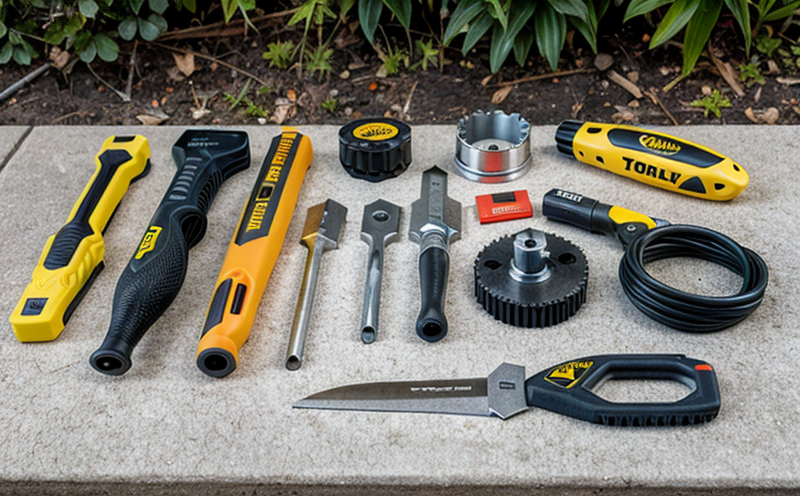Grip Comfort and Ergonomics Testing
In today's fast-paced world, the design of DIY tools and hardware products plays a critical role in ensuring user satisfaction and safety. Grip comfort and ergonomics testing are essential components to evaluate how well these products fit into users' hands, providing ease of use while minimizing strain or discomfort. This service focuses on assessing various aspects such as handle shape, size, texture, and overall design to ensure that DIY tools like wrenches, screwdrivers, and pliers meet both ergonomic standards and customer expectations.
Understanding the importance of grip comfort and ergonomics starts with recognizing how different hand sizes, shapes, and preferences influence tool performance. A well-designed grip should offer a secure, comfortable fit, allowing users to exert force effectively without causing fatigue or injury. The primary goal is to create products that enhance productivity while promoting long-term user health.
Standardized testing methods are crucial for achieving consistent results across various manufacturers and models. These tests follow international standards such as ISO 10546:2019, which provides guidelines on human factors engineering aspects related to tool design. By adhering to these standards, laboratories ensure that their assessments are reliable and comparable.
The testing process typically involves several steps. Specimens undergo initial inspection for any visible defects or inconsistencies before being placed into a specialized grip comfort evaluation machine. The machine measures key parameters including finger placement, handle diameter, angle of curvature, and surface texture. Additional tests may include simulating real-world usage scenarios to gauge overall user experience.
Once the data collection phase is complete, detailed reports are generated highlighting all relevant findings along with recommendations for improvement where necessary. These insights help manufacturers refine their designs based on actual performance metrics rather than assumptions alone. Ultimately, this ensures that every product released onto the market not only looks good but also functions safely and efficiently.
By offering comprehensive grip comfort and ergonomics testing services, we aim to support our clients' goals in creating safer, more user-friendly DIY tools and hardware products. Our expertise lies in delivering accurate, reproducible results that contribute significantly towards achieving regulatory compliance and enhancing brand reputation.
| Product Type | Grip Comfort & Ergonomics Testing Benefits |
|---|---|
| Diy Tools (Wrenches, Screwdrivers) | Ensure proper fit for various hand sizes. |
| Safety Equipment (Gloves) | Improve user comfort and reduce physical stress during prolonged use. |
| Construction Accessories | Promote efficient work processes by reducing fatigue among workers. |
| Automotive Components | Create tools that are easy to hold even under heavy loads. |
Industry Applications
- Diy Tools (Wrenches, Screwdrivers)
- Safety Equipment (Gloves)
- Construction Accessories
- Automotive Components
Why Choose This Test
- Ensures compliance with international standards.
- Provides valuable insights into product performance.
- Promotes safer, more comfortable user experience.
- Supports continuous improvement in design and manufacturing processes.
- Aids in meeting regulatory requirements for safety and quality.
- Saves time by identifying potential issues early in the development cycle.
- Enhances brand reputation through superior product offerings.
Quality and Reliability Assurance
Grip comfort and ergonomics testing form an integral part of our quality assurance framework aimed at delivering reliable, high-quality products. Our team utilizes advanced equipment combined with experienced personnel to ensure accurate measurements and consistent results. Regular calibration ensures that all instruments remain within specified tolerances.
We also emphasize the importance of understanding customer feedback when refining designs. By incorporating real-world usage data into our analysis, we can better predict how changes will impact overall performance and user satisfaction levels. This collaborative approach allows us to stay ahead of industry trends while maintaining a focus on delivering value-added solutions.
Our commitment to excellence extends beyond just meeting current standards; it also involves anticipating future developments in ergonomics research and incorporating them into our testing protocols whenever possible. Through ongoing education and innovation, we strive to provide the most accurate representation of what constitutes optimal grip comfort and ergonomics for DIY tools and hardware products.





